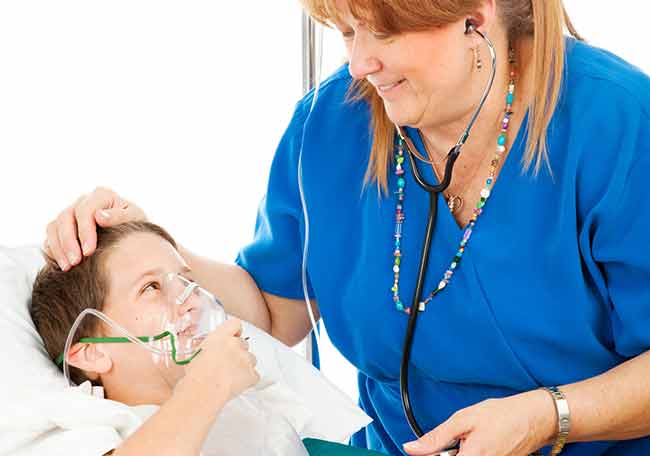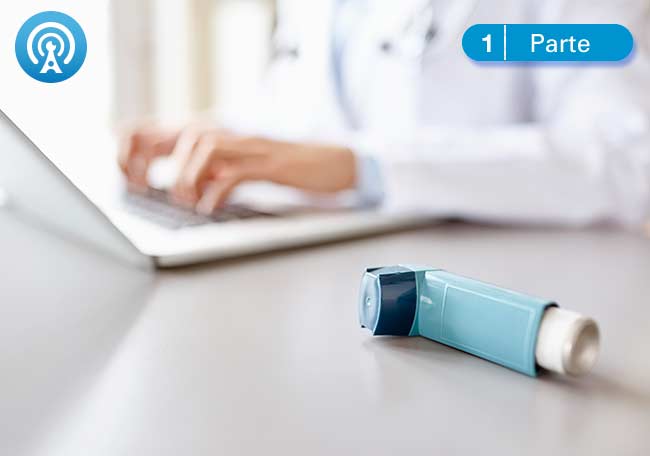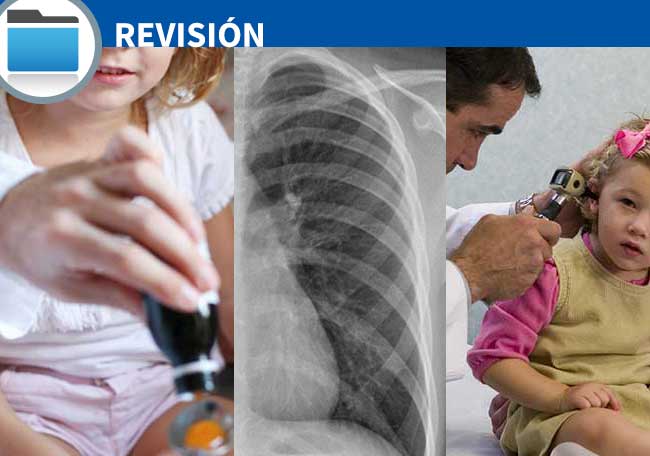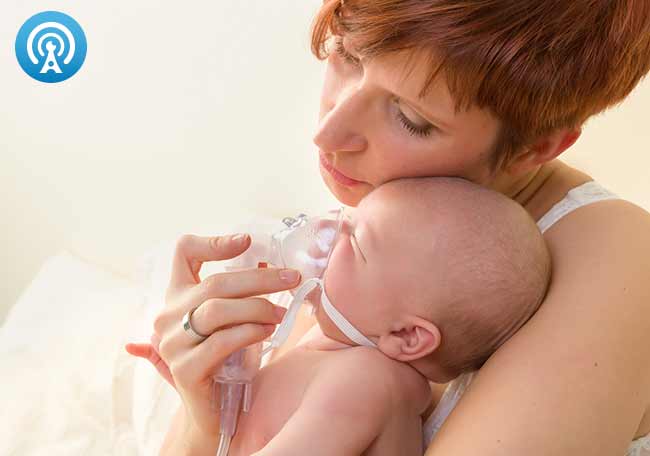Sibilancias en la infancia

1. Garcia-Marcos L, Mallol J, SoléD, Brand PL, EISL Study Group, International study of wheezing in infants: risk factors in affluent and non-affluent countries during the first year of life. Pediatr Allergy Immunol 2010;21(5):878.
2. Mallol J, García-Marcos L, Solé D, Brand P, EISL Study Group. International prevalence of recurrent wheezing during the first year of life: variability, treatment patterns and use of health resources. Thorax 2010;65(11):1004–9.
3. Guilbert TW, Mauger DT, Lemanske RF Jr. Childhood asthma-predictive phenotype. J Allergy Clin Immunol Pract 2014;2:664–70.
4. Sears MR, Greene JM, Willan AR, Wieck EM, Taylor DR, Flannery EM, et al. A longitudinal, population-based, cohort study of childhood asthma followed to adulthood. N Engl J Med 2003;349:1414–22.
5. Martinez FD, Wright AL, Taussig LM, Holberg CJ, Halonen M, Morgan WJ. Asthma and wheezing in the first six years of life. N Engl J Med1995;332(3):133– 8.
6. Stein RT, Sherrill D, Morgan WJ, Holberg CJ, Halonen M, Taussig LM, et al. Respiratory syncytial virus in early life and risk of wheeze and allergy by age of 13 years. Lancet 1999;354 (9178):541–5.
7. Guilbert TW, Morgan WJ, Zeiger RS, Bacharier LB, Boehmer SJ, Krawiec M, et al. Atopic characteristics of children with recurrent wheezing at high risk for the development of childhood asthma. J Allergy Clin Immunol 2004;114(6):1282–7.
8. Golding J, Pembrey M, Jones R, ALSPAC Study Team. ALSPAC–the Avon Longitudinal Study of Parents and Children. J Paediatr Perinat Epidemiol 2002;15(1):76–87.
9. Henderson J, Granell R, Heron J, Sherriff A, Simpson A, Woodcock A, et al. Associations of wheezing phenotypes in the first 6 years of life with atopy, lung function and airway responsiveness in mild childhood. Thorax 2008;63(11) 974–80.
10. Brunekreef B, Smit J, de Jongste J, Neijens H, Gerritsen J, Postma D, et al. The Prevention and Incidence of Asthma and Mite Allergy (PIAMA) birth cohort study: design and first results. Pediatr Allergy Immunol 2002;13(15):55–60.
11. Wolfe R, Carlin JB, Oswald H, Olinsky A, Phelan PD, Robertson CF. Association between allergy and asthma from childhood to middle adulthood in an Australian cohort study. Am J Respir Crit Care Med 2000;162:2177–81.
12. Phelan PD, Robertson CF, Olinsky A. The Melbourne asthma study: 1964-1999, J Allergy Clin Immunol 2002;109(2):189–94.
13. Rusconi F, Galassi C, Corbo GM, Forastiere F, Biggeri A, Ciccone G, et al. Risk factors for early, persistent, and late-onset wheezing in young children. Am J Respir Crit Care Med 1999;160 (1):1617–22.
14. Savenije OE, Granell R, Caudri D, Koppelman GH, Smit HA, Wijga A, et al. Comparison of childhood wheezing phenotypes in 2 birth cohorts: ALSPAC and PIAMA. J Allergy Clin Immunol 2011;127(6):1505–12.
15. Ducharme FM, Tse SM, Chauhan B. Diagnosis, management, and prognosis of preschool wheeze. Lancet 2014;383(9928):1593–604.
16. Saglani S, Payne DN, Zhu J, Wang Z, Nicholson AG, Bush A, Jeffery PK. Early detection of airway wall remodeling and eosinophilic inflammation in preschool wheezers. Am J Respir Crit Care Med 2007; 176(9):858–64.
17. Brand PL. Definition, assessment and treatment of wheezing disorders in preschool children: an evidence-based approach. Eur Respir J 2008; 32:1096– 110.
18. Depner M, Fuchs O, Genuneit J, Karvonen AM, Hyvarinen A, Kaulek V, et al. Clinical and epidemiologic phenotypes of childhood asthma. Am J Respir Crit Care Med 2014; 189:129–38.
19.Granell R, Henderson AJ, Sterne JA. Associations of wheezing phenotypes with late asthma outcomes in the Avon Longitudinal Study of Parents and Children: a population-based birth cohort. J Allergy Clin Immunol 2016; 138:1060–70.
20. Turner SW, Palmer LJ, Rye PJ, Gibson NA, Judge PK, Cox M, et al. The relationship between infant airway function, childhood airway responsiveness, and asthma. Am J Respir Crit Care Med 2004; 169(8):921–7.
21. Townshend J, Hails S, McKean M. Diagnosis of asthma in children. BMJ 2007; 335:198–202.
22. Stern DA, Morgan WJ, Halonen M, Wright AL, Martinez FD. Wheezing and bronchial hyper-responsiveness in early childhood as predictors of newly diagnosed asthma in early adulthood: a longitudinal birth-cohort study. Lance 2008;372 (9643):1058–64.
23. Gilliland FD, Li YF, Peters JM. Effects of maternal smoking during pregnancy and environmental tobacco smoke on asthma and wheezing in children. Am J Respir Crit Care Med 2001; 163(2):429–36.
24. Barnes KC, Grant AV, Hansel NN, Gao P, Dunston GM. African Americans with asthma: genetic insights. Proc Am Thorac Soc 2007;4(1):58–68.
25. Ober C, Loisel DA, Gilad Y. Sex-specific genetic architecture of human disease. Nat Rev Genet 2008;9(12):911–22.
26. El-Gamal YM, El-Sayed SS. Wheezing in infancy. World Allergy Organ J 2011;4:85–90.
27. Martinez FD. The connection between early life wheezing and subsequent asthma: the viral march. Allergol Immunopathol (Madr) 2009;37:249–51.
28. Holt PG, Sly PD. Prevention of allergic respiratory disease in infants: current Aspects and future perspectives. Curr Opin Allergy Clin Immunol 2007; 7(6):547–55.
29. Sly PD, Kusel M, Holt PG. Do early-life viral infections cause asthma? J Allergy Clin Immunol 2010; 125:1202–5.
30. Lowe LA, Simpson A, Woodcock A, Morris J, Murray CS, Custovic A. Wheeze phenotypes and lung function in preschool children. Am J Respir Crit Care Med 2005;171:231–7.
31. Kurukulaaratchy RJ, Fenn MH, Waterhouse LM, Matthews SM, Holgate ST, Arshad SH. Characterization of wheezing phenotypes in the first 10 years of life. Clin Exp Allergy 2003; 33(5):573–8.
32. Shah SS. Wheezing. In: Shah SS, Ludwig S, editors. Pediatric complaints and diagnostic dilemmas: a case-based approach. 2014, p. 1–32.
33. Chang TS, Lemanske RF Jr, Guilbert TW, Gern JE, Coen MH, Evans MD, et al. Evaluation of the modified Asthma Predictive Index in high-risk preschool children. J Allergy Clin Immunol Pract 2013;1(2):1212.
34. Castro-Rodríguez JA, Holberg CJ, Wright AL, Martinez FD. A clinical index to define risk of asthma in young children with recurrent wheezing. Am J Respir Crit Care Med 2000;162:1403–6.
35. Castro-Rodriguez JA. The Asthma Predictive Index: a very useful tool for predicting asthma in young children J Allergy Clin Immunol 2010;126:212–6.
36. National Asthma Education and Prevention Program, National Heart, Lung, and Blood Institute, National Institutes of Health. Guidelines for the diagnosis and management of asthma. 2007.
37. Guilbert TW, Morgan WJ, Krawiec M, Lemanske RF. The Prevention of Early Asthma in Kids study: design, rationale and methods for the Childhood Asthma Research and Education Network. Control Clin Trials 2004;25(3):286– 310.
38. Amin P, Levin L, Epstein T, Ryan P, LeMasters G, Hershey GK, Reponen T, Villareal M, Lockey J, Bernstein DI. Optimum predictors of childhood asthma: persistent wheeze or the Asthma Predictive Index? J Allergy Clin Immunol Pract 2014;2(6):709–15.
39. Pescatore AM, Dogaru CM, Duembgen L, Silverman M, Gaillard EA, Spycher BD, Kuehni CE. A simple asthma prediction tool for preschool children with wheeze or cough. J Allergy Clin Immunol 2014;133(1):111–8.
40. Saglani S, Nicholson AG, Scallan M, Balfour-Lynn I, Rosenthal M, Payne DN, Bush A. Investigation of young children with severe recurrent wheeze. Eur Respir J 2006 27:29–35.
41. Roback MG, Dreitlein DA. Chest radiograph in the evaluation of first time wheezing episodes: review of current clinical practice and efficacy. Pediatr Emerg Care 1998;14(3):181–4.
42. Rahman MD. Wheezing in pre school children-approach to diagnosis and management-review. EC Pulmonol Respir Med 2018;7(6):424–45.
43. Tromp II, Kiefte-de Jong JC, Lebon A, Renders CM, Jaddoe VW, Hofman A, et al. The introduction of allergenic foods and the development of reported wheezing and eczema in childhood: the Generation R study. Arch Pediatr Adolesc Med 2011;165(10):933–8.
44. Ducharme FM, Tse SM, Chauhan B. Diagnosis, management, and prognosis of preschool wheeze. Lancet 2014;3383(9928):1593–604.
45. Patra S, Singh V, Chandra J, Kumar P, Tripathi M. Diagnostic modalities for gastro-esophageal reflux in infantile wheezers. J Trop Pediatr 2011;5(2):99– 103.
46. Mercado-Deane MG, Burton EM, Harlow SA, Glover AS, Deane DA, Guill MF, Hudson V. Swallowing dysfunction in infants less than 1 year of age. Pediatr Radiol 2001;31(6):423–8.
47. Aslan AT, Kiper N, Dogru D, Karagoz AH, Ozcelik U, Yalcin E. Diagnostic value of flexible bronchoscopy in children with persistent and recurrent wheezing. Allergy Asthma Proc 2005;26:483–6.
48. Cakir E, Ersu RH, Uyan ZS, Oktem S, Karadag B, Yapar O, et al. Flexible bronchoscopy as a valuable tool in the evaluation of persistent wheezing in children. Int J Pediatr Otorhinolaryngol 2009;73(12):1666–8.
49. Baraldi E, Donega S, Carraro S, Farina M, Barbato A, Cutrone C. Tracheobronchomalacia in wheezing young children poorly responsive to asthma therapy. Allergy 2010;65(8):1064–5.
50. El-Gamal YM, El-Sayed SS. Wheezing in infancy. World Allergy Organ J 2011;4(5):85–90.
51. Lowe LA, Simpson A, Woodcock A, Morris J, Murray CS, Custovic A. Wheeze phenotypes and lung function in preschool children. Am J Respir Crit Care Med 2005;171:231–7.
Comentarios
Para ver los comentarios de sus colegas o para expresar su opinión debe ingresar con su cuenta de IntraMed.










